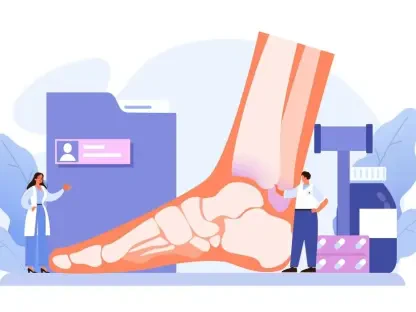Community Information Exchanges (CIEs) are revolutionizing the healthcare landscape by integrating social determinants of health into patient care data. This innovative approach is particularly beneficial for vulnerable populations, such as the homeless or housing-insecure, and is being adopted in various communities across the United States. By incorporating social aspects alongside medical data, CIEs offer a more comprehensive overview of individual health, enabling providers to address a broader set of needs effectively.
The Genesis of Community Information Exchanges
San Diego’s Pioneering Efforts
In 2011, a consortium of healthcare providers in San Diego received a federal grant to establish a health information exchange (HIE). The initial focus was solely on health data sharing, but advocates like Camey Christenson emphasized the importance of incorporating social health information, such as housing stability, to provide comprehensive care. Despite initial resistance, these efforts led to the creation of a CIE under 211 San Diego, an organization managing a health and community services hotline. Funded with a $1 million grant from San Diego’s Alliance Health Care Foundation, this CIE sought to address the full spectrum of conditions affecting clients’ lives.
San Diego’s first CIE version launched in 2014 and now maintains records for around 380,000 people, or over 10% of the county’s population. The CIE has facilitated care coordination among 138 partners, including major health insurers, LGBTQ organizations, and the YMCA. One of its key functionalities is alerting providers to crisis situations, such as a client entering the shelter system or ending up in the emergency department. This enables timely interventions, thereby preventing escalation and improving outcomes. The CIE’s success has significantly changed how providers approach integrating health and social care.
Integration with Health Information Exchanges
Over time, the CIE and HIE systems in San Diego have become more integrated. Health care providers can now access the comprehensive records of the CIE through a dedicated tab in the HIE dashboard. In 2022, San Diego 211 took over the local HIE, leading to shared governance and CEO between both systems. This integration underscores the growing recognition of the symbiotic relationship between healthcare and social services. By merging these systems, providers can get a fuller picture of a patient’s needs, from medical conditions to housing stability, enhancing the ability to offer holistic care.
This shared governance model has proven beneficial in streamlining operations and fostering cooperation among different entities. The CIE and HIE collaboration has improved data sharing parity, ensuring that both sets of data are readily available and actionable. Providers are now better equipped to intervene early and effectively, thanks to this merged system. Moreover, this approach helps reduce redundant efforts and aligns goals across health and social service sectors, ultimately benefiting the patient by providing more cohesive and targeted support.
Impact and Expansion of CIEs
Evidence of Success
Concrete evidence of the CIE’s impact is highlighted by a 2017 study from the University of California, San Diego, which showed that San Diego’s CIE significantly reduced emergency medical transports among seniors, saving about $1.3 million in medical costs over three years. This model of a community information exchange has inspired 30 other CIEs nationwide, providing mentorship and tools to these emerging programs. To protect the integrity and prevent misleading use of the concept, 211 San Diego trademarked the term “Community Information Exchange.” This initiative has set a standard, ensuring that the practice’s core principles and mission remain intact.
The ripple effect of San Diego’s success can be seen in these new CIEs, which are being tailor-made to suit their unique community needs while following the proven strategies of their predecessor. The mentorship provided by the original CIE has been crucial in helping these new exchanges understand and navigate the complexities of integrating social determinants with healthcare. As a result, these CIEs can better allocate resources, address community challenges effectively, and improve health outcomes. The growing number of CIEs across the country is a testament to the scalability and adaptability of the model.
Chicago’s Emerging CIE
Chicago is one such place working to build its CIE with support from the Illinois Public Health Institute (IPHI), the Chicago Department of Public Health, and the Cook County Bureau of Economic Development. Like San Diego, Chicago’s exchange initially aims to support people experiencing housing insecurity. However, Chicago’s CIE is also designed for potential expansion, ensuring HIPAA compliance to prepare for handling medical data as it grows. With no existing HIEs in the metropolitan area, the CIE will be a critical tool for capturing information about frequent health care users, set for deployment in the next year.
The blueprint for Chicago’s CIE was thoroughly assessed to ensure it would meet the community’s needs and be flexible enough to adapt as those needs evolve. By starting with the most vulnerable populations, the CIE focuses on addressing immediate, pressing needs while setting a foundation for broader inclusion of health-related data. Stakeholders have also been actively engaged in the planning and implementation process to ensure the system’s effectiveness. By learning from San Diego’s experiences, Chicago aims to preempt potential challenges and optimize the system from the outset.
The Role of Healthcare Institutions
Reducing Costs and Improving Care
Healthcare institutions see the CIE’s potential to reduce costs by diverting high-use individuals—many of whom are unhoused—from emergency departments. Health providers and insurers, influenced by the Affordable Care Act of 2010, which emphasizes improving population health to reduce healthcare costs, have been employing case managers and community health managers to refer patients to necessary services. However, these efforts faced difficulties due to the overwhelm of small social service organizations and lack of tools for a population health approach. CIEs offer a solution by indicating which organizations have the capacity for referrals and which interventions yield the best outcomes.
Furthermore, the robust data infrastructure of CIEs allows for more precise monitoring and evaluation of patient engagement and outcomes. This level of detail enables healthcare institutions to identify high-risk individuals more effectively and introduce timely interventions. The integrated data helps avoid the duplication of services and ensures that the most suitable and capable social services are engaged, reducing overall healthcare spending. This approach supports a shift from reactive to proactive care, aligning with broader goals of population health management and promoting long-term cost savings.
Policy and Funding Support
Additionally, changes introduced by the Biden administration to Medicaid’s Section 1115 waivers promise more funding for interventions that address health-related social needs while emphasizing the importance of maintaining better records. The Robert Wood Johnson Foundation funded many data-sharing initiatives, including those in San Diego and Chicago. According to Hilary Heishman, a deputy director at the foundation, CIEs can address trust issues more effectively by being community-built, allowing for faster and more accurate detection of community health needs than top-down systems. She emphasizes their role in helping grassroots organizations use data to narrate community challenges and opportunities.
This policy environment is vital for the sustainability and expansion of CIEs. By securing federal and foundational support, CIEs can continue to develop and refine their operations. Emphasizing community-driven initiatives ensures that the solutions are both relevant and accepted by local populations. This bottom-up approach increases trust and engagement, critical factors for the long-term success of any health intervention. Additionally, the availability of funds through Medicaid waivers and other grants can be pivotal in scaling these efforts and covering operational costs associated with maintaining such comprehensive systems.
Future Prospects and Challenges
Scaling and Replicating Success
The success of CIEs in San Diego and Chicago provides a roadmap for other communities looking to integrate social determinants into healthcare. These models demonstrate that comprehensive data sharing can improve outcomes and reduce costs, supporting a population health approach. As more communities adopt CIEs, the potential for nationwide transformation in healthcare becomes increasingly tangible. Deploying these systems broadly promises significant advancements in public health, as localized insights become part of a more extensive network of shared knowledge and best practices.
Lessons learned from early adopters like San Diego and Chicago can guide new implementations, making the process smoother and more effective. Collaboration between established and emerging CIEs can accelerate learning, reducing the time and resources needed to achieve similar successes. Furthermore, the expanding national network of CIEs could enable multi-jurisdictional studies and interventions, providing richer, more diverse data for understanding and addressing public health challenges. The potential for these systems to enhance community health and well-being illustrates the visionary capacity of CIEs to reshape how we approach healthcare.
Addressing Implementation Barriers
By focusing on a person’s overall circumstances, including their housing, food security, and social connections, CIEs help to ensure that care plans are tailored to each individual’s unique situation. This holistic approach can lead to improved health outcomes and more efficient use of healthcare resources. In essence, CIEs enable health professionals to deliver more personalized and comprehensive care, ensuring that all aspects of a patient’s life are considered. They are creating a more cohesive, responsive, and effective healthcare system, positively impacting communities nationwide.









